 All of this sounds simple at first, even in practice. Instead of a water block, simply place a flat heatpipe on a large heat sink and optionally let water pass through to absorb and remove the waste heat. A relatively simple knitted water cooling system is finished, which can be used in parallel with normal air cooling and can even completely replace it.
All of this sounds simple at first, even in practice. Instead of a water block, simply place a flat heatpipe on a large heat sink and optionally let water pass through to absorb and remove the waste heat. A relatively simple knitted water cooling system is finished, which can be used in parallel with normal air cooling and can even completely replace it.
Today's test will show that such a compromise, because it is one, can still work quite well. However, one should not expect miracles, also because of the necessary technical limitations and specifications, especially from the water cooler.
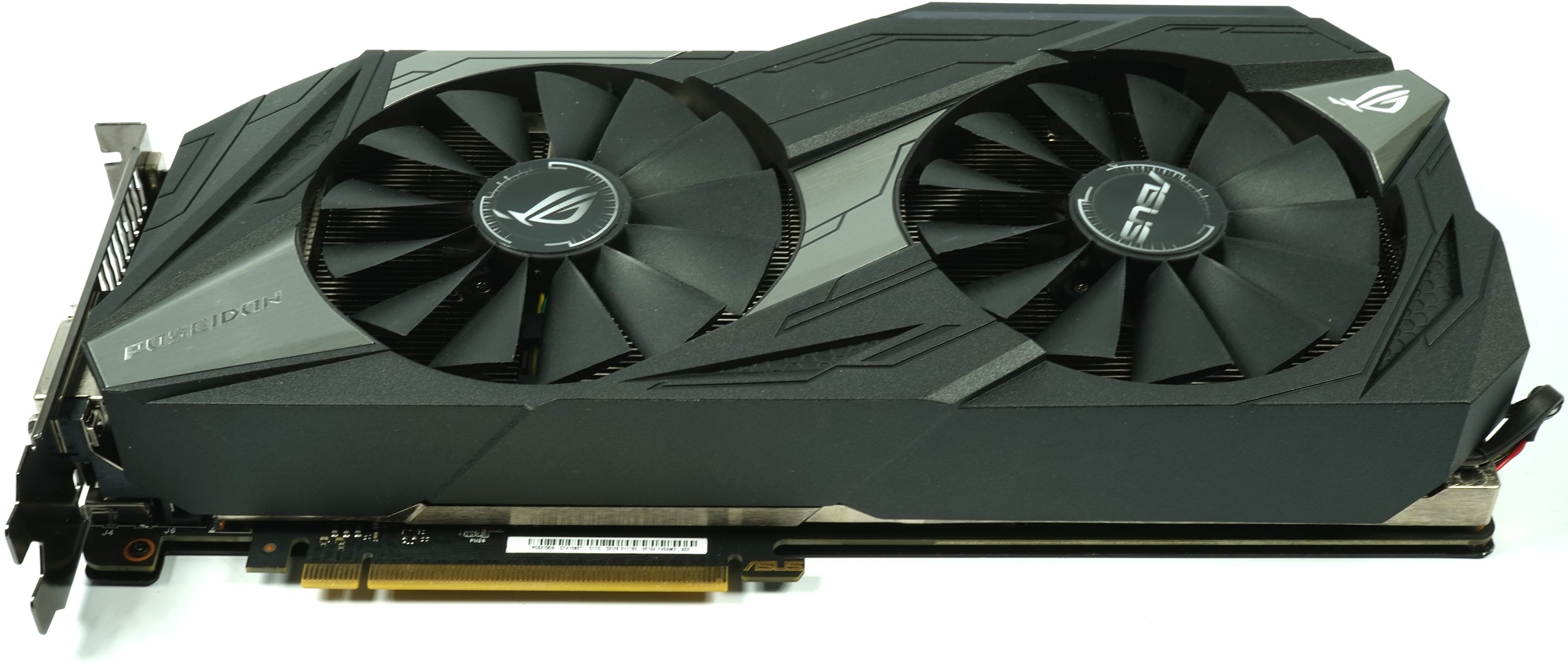
Since the actual performance of all board partner cards depends more on the actual boost clock achieved, and thus causally depends on the cooling, the power target and above all the quality of the respective chip, any test based only on benchmark bars is more of a Random snapshot of a single specimen. This is precisely why we have focused on the actual technical implementation of each model and have been able to document this very well with our equipment.
Unboxing, dimensions and connections
The map is powerful, visually striking and otherwise not a shameful wallflower, but rather a self-confident exotic. However, we will discuss the interesting cooling design separately later.
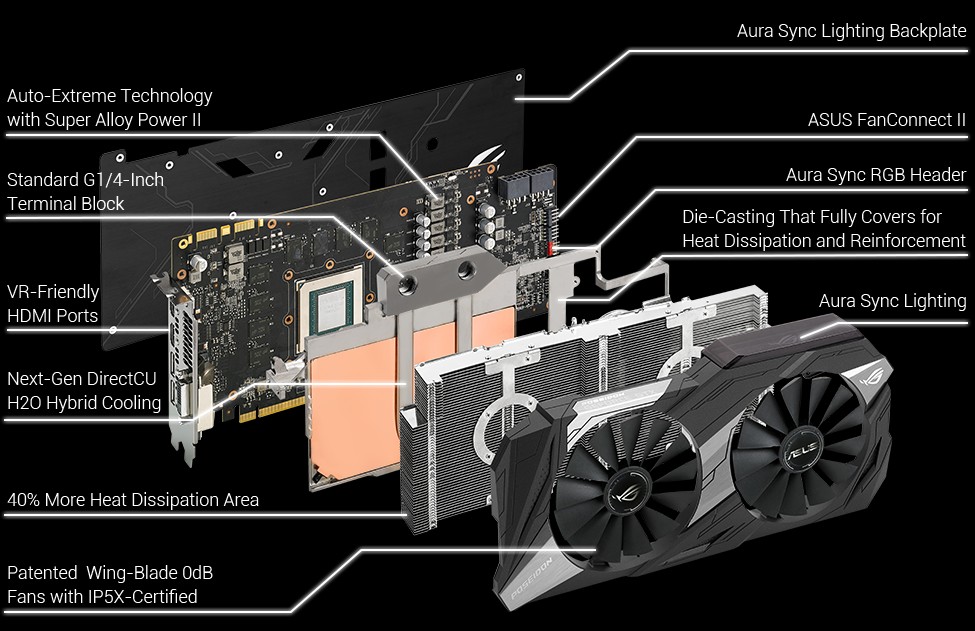
The most important features are first summarized in a table:
| Overview of installation dimensions, features and connections | |
|---|---|
| Installation length: |
29.4 cm (slot aperture to end cover) 30.0 cm (slot aperture to harness) |
| Installation height: |
14.5 cm (upper edge slot to top card) |
| Depth: |
3.8 cm (2.5 slot) 0.5 cm baking plate |
| Weight: |
1636 grams |
| Backplate: | Yes, with RGB logo |
| Cooling: | Hybrid of water or air cooling Horizontally aligned cooling fins |
| Fan: |
2x 10 cm (9.6 cm rotor diameter) |
| Connections Slot blend: |
2x DisplayPort 1.4 2x HDMI 2.0 1x Dual-Link DVI-I |
| Other shots: |
2x SLI Connector Controlled housing fan outputs RGB output Various measuring points |
| Power supply: |
2x 8-pin PCI-Express |
Exterior views
Now let's look at the map from the outside. Asus attaches great importance to a good first optical impression, but the entire front cover is only made of simple plastic. The only accents are the RGB effects on the top and back, as well as the visible radiator connection with the threaded connectors. To enlarge, please click on the respective picture.
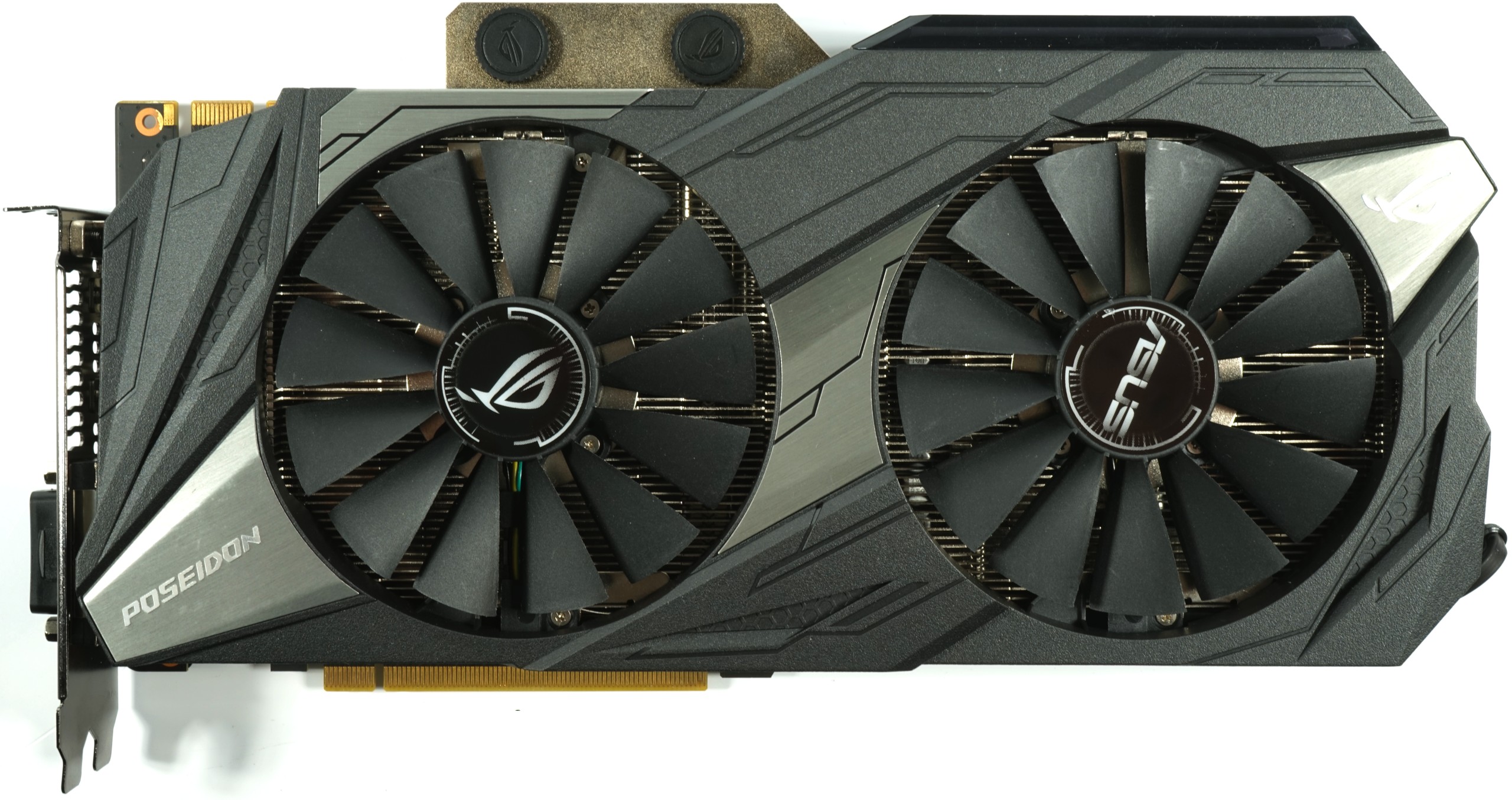 |
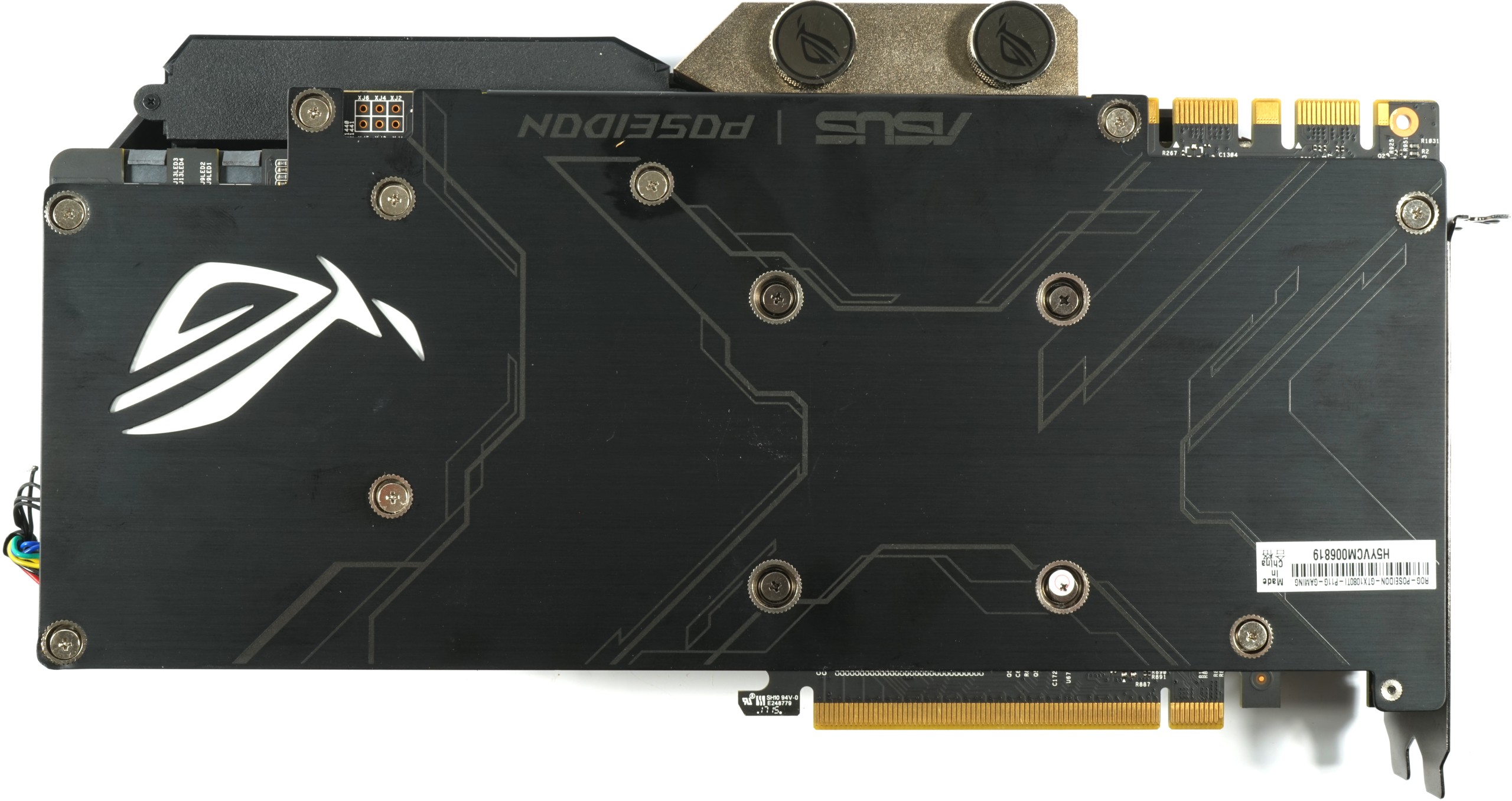 |


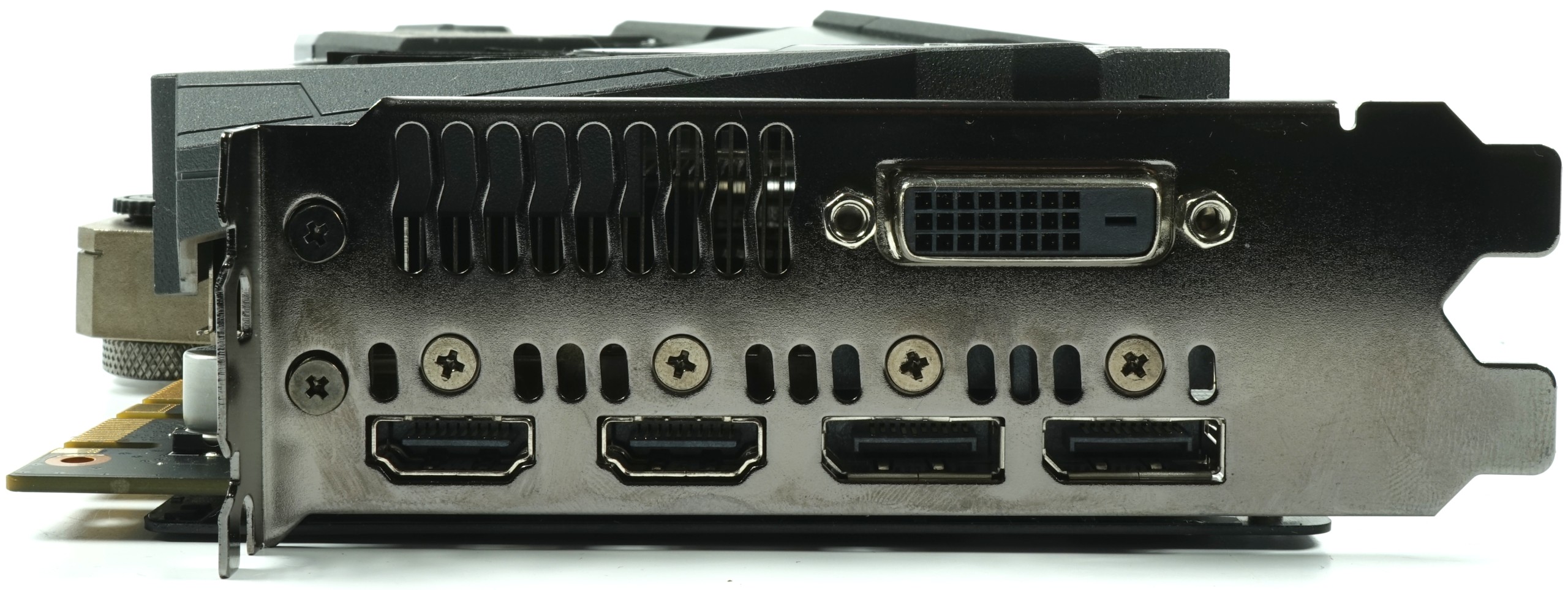 |
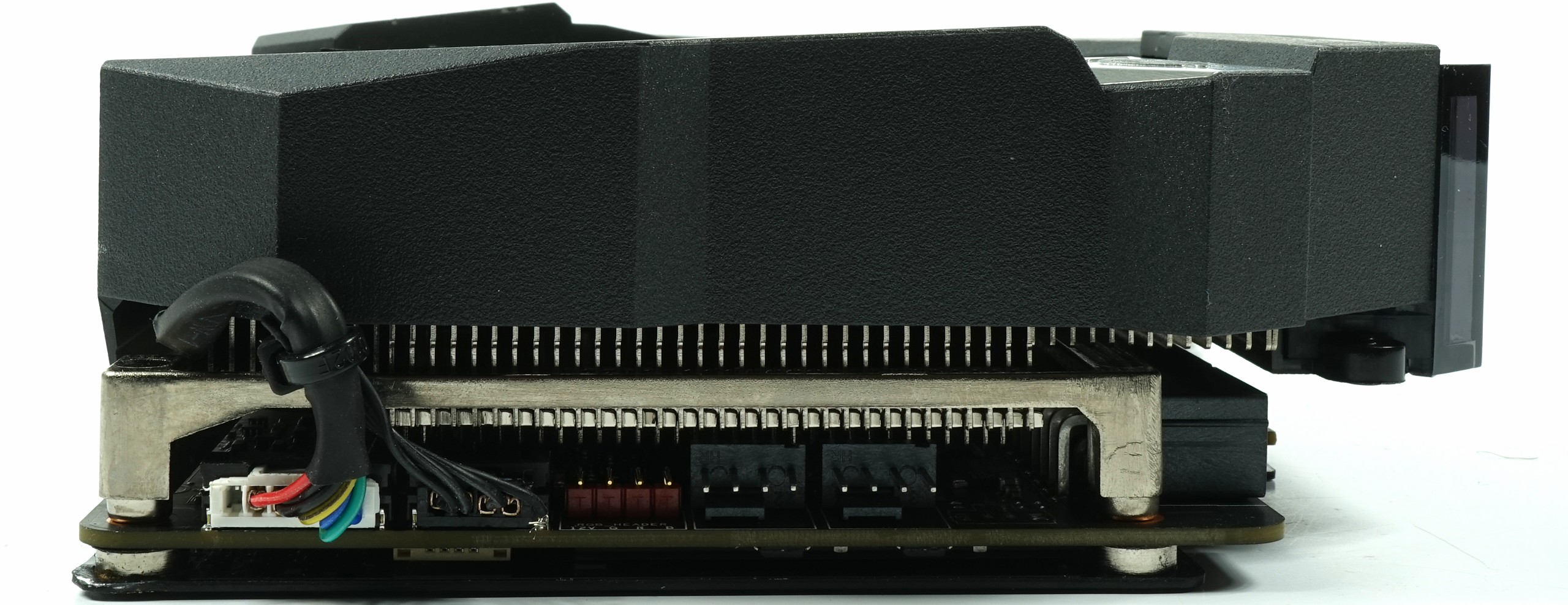 |
Specifications
The GPU-Z screenshot shows us the most important key data in advance, whereby the actual boost achieved with our model was significantly higher:
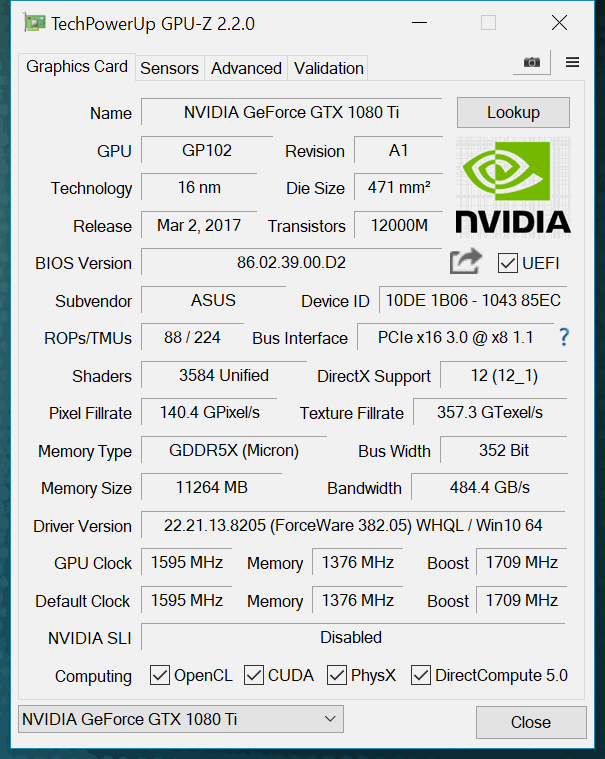
Finally, the whole thing again as a tabular comparison to the other relevant graphics card models:
| Nvidia Titan X – (Pascal) Mr President, I would like to |
Nvidia Geforce GTX 1080 Ti FE |
Asus GTX 1080 Ti ROG Poseidon Platinum |
Nvidia Geforce GTX 1080 FE |
Nvidia Geforce GTX 980 Ti |
|
|---|---|---|---|---|---|
| Gpu |
GP102 | GP102 | GP102 | GP104 | GM200 |
| CUDA cores |
3584 | 3584 | 3584 | 2560 | 2816 |
| Base clock | 1417 MHz | 1480 MHz | 1595 MHz |
1607 MHz | 1000 MHz |
| Boost clock |
1531 MHz+ | 1582 MHz+ | 1709 MHz |
1733 MHz+ | 1076 MHz+ |
| Memory Size & Type |
12 GByte GDDR5X |
11 GByte GDDR5X |
11 GByte GDDR5X |
8 GByte GDDR5X |
6 GByte GDDR5 |
| The size |
471 mm2 | 471 mm2 | 471 mm2 | 314 mm2 | 601 mm2 |
| Technology |
16 nm | 16 nm | 16 nm | 16 nm | 28 nm |
| Transistors |
12 billion | 12 billion | 12 billion | 7.2 billion | 8 billion |
| Streaming Multiprocessors (SM) |
28 | 28 | 28 |
20 | 22 |
| GFLOPS (basic clock) |
10.157 | 10.609 | 11.068 |
8.228 | 5.632 |
| Texture Units |
224 | 224 | 224 | 160 | 176 |
| Texture fill rate |
317.4 GT/s | 331.5 GT/s | 357.3 GT/s |
257.1 GT/s | 214 GT/s |
| Rops |
96 | 88 | 88 |
64 | 96 |
| Pixel fill rate |
136 GPix/s | 130.24 GPix/s | 140.4 GPix/s |
114.2 GPix/s | 116.7 GPix/s |
| Storage data rate |
10 Gbps | 11 Gbps | 11 Gbps | 10 Gbps | 7 Gbps |
| Storage bus |
384 bits | 352 bits | 352 bits | 256 bits | 384 bits |
| Memory bandwidth |
480 GByte/s | 484.4 GByte/s | 484.4 GByte/s | 320 GByte/s | 336 GByte/s |
| L2 cache |
3 MByte | 2816 KByte | 2816 KByte | 2 MByte | 3 MByte |
| Tdp |
250 watts | 250 watts | 275 Watt (PT) |
180 watts | 250 watts |
Test system and measurement methods
The new test system and the methodology have already been described in great detail in the basic article "How We Test Graphics Cards" (English: "How We Test Graphics Cards") and therefore, for the sake of simplicity, we now only refer to this detailed Description. So if you want to read everything again, you are welcome to do so. However, we have improved CPU and cooling once again in order to largely exclude possible CPU bottle necks for this fast card.
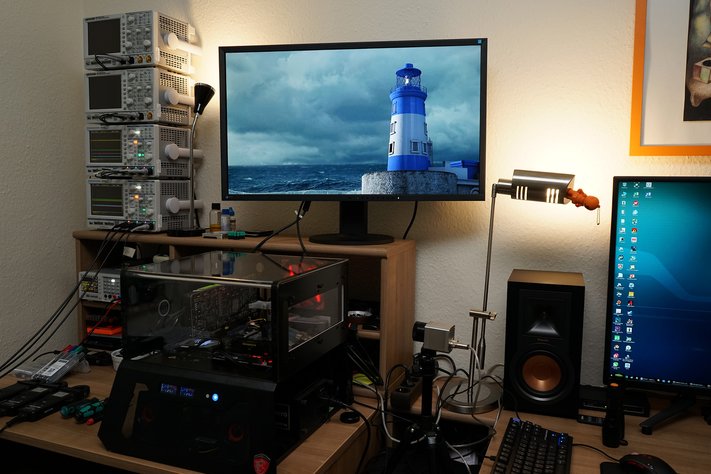
If you are interested, the summary in table form quickly provides a brief overview:
| Test systems and measuring rooms | |
|---|---|
| Hardware: |
Intel Core i7-6900K -4.3GHz MSI X99S XPower Gaming Titanium Corsair Vengeance DDR4-3200 1x 1 TByte Toshiba OCZ RD400 (M.2, System SSD) 2x 960 GByte Toshiba OCZ TR150 (Storage, Images) Be Quiet Dark Power Pro 11, 850-watt power supply Windows 10 Pro (all updates) |
| Cooling: |
Alphacool Ice Block XPX Alphacool Ice Age 2000 Chiller 2x Be Quiet! Silent Wings 3 PWM (Closed Case Simulation) Thermal Grizzly Kryonaut (for cooler change) |
| Housing: |
Lian Li PC-T70 with expansion kit and modifications Modes: Open Benchtable, Closed Case |
| Monitor: | Eizo EV3237-BK |
| Power consumption: |
non-contact DC measurement on the PCIe slot (Riser-Card) non-contact DC measurement on the external PCIe power supply Direct voltage measurement on the respective feeders and on the power supply 2x Rohde & Schwarz HMO 3054, 500 MHz multi-channel oscillograph with memory function 4x Rohde & Schwarz HZO50, current togor adapter (1 mA to 30 A, 100 KHz, DC) 4x Rohde & Schwarz HZ355, touch divider (10:1, 500 MHz) 1x Rohde & Schwarz HMC 8012, digital multimeter with storage function |
| Thermography: |
Optris PI640, infrared camera PI Connect evaluation software with profiles |
| Acoustics: |
NTI Audio M2211 (with calibration file) Steinberg UR12 (with phantom power for the microphones) Creative X7, Smaart v.7 own low-reflection measuring room, 3.5 x 1.8 x 2.2 m (LxTxH) Axial measurements, perpendicular to the center of the sound source(s), measuring distance 50 cm Noise in dBA (Slow) as RTA measurement Frequency spectrum as a graph |
- 1 - Einführung und Übersicht
- 2 - Platine und Spannungsversorgung im Detail
- 3 - Gaming Performance: 2560 x 1440 Pixel (WQHD)
- 4 - Gaming-Performance: 3840 x 2160 Pixel (Ultra-HD)
- 5 - Leistungsaufnahme Im Detail
- 6 - Temperaturen, Taktraten, OC und Wärmebildanalyse
- 7 - Kühlerdetails und Geräuschentwicklung
- 8 - Zusammenfassung und Fazit
































Kommentieren